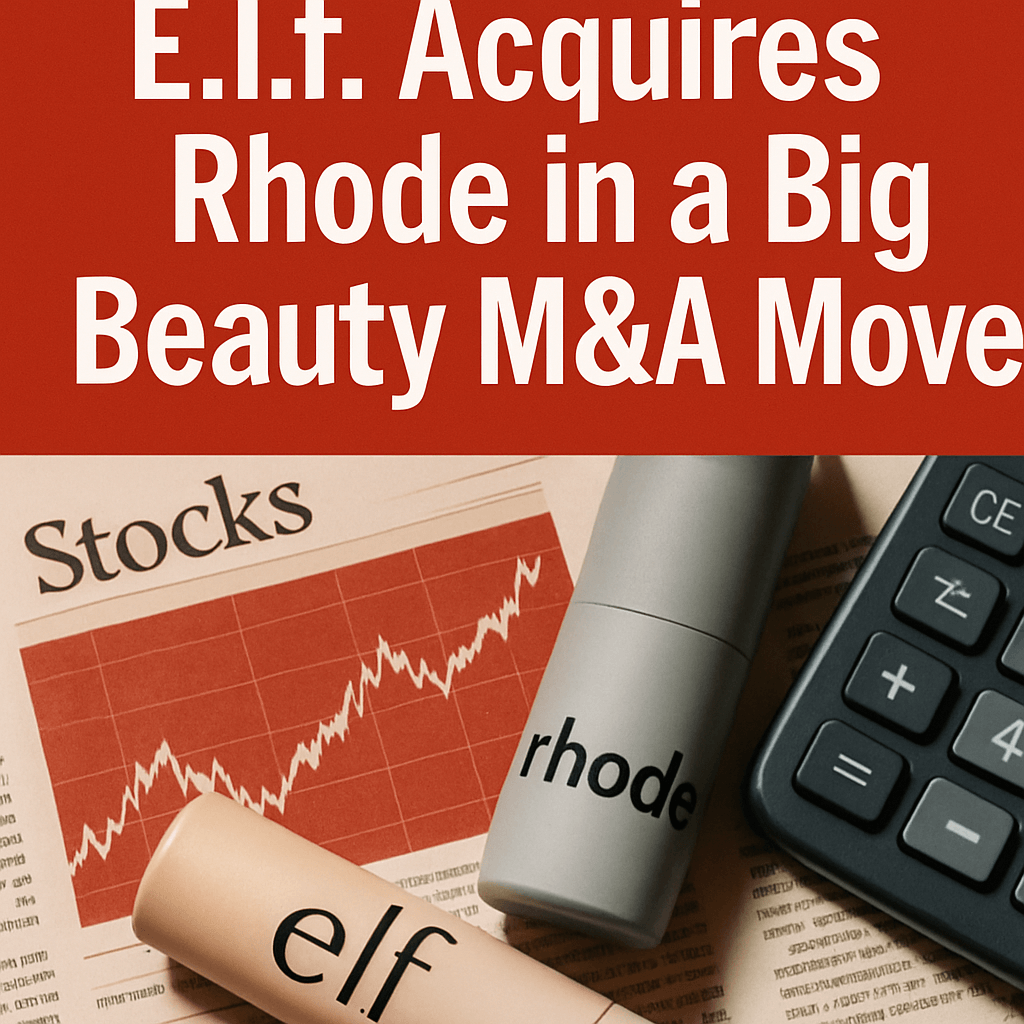E.l.f. Acquires Rhode in a Big Beauty M&A Move

In a blockbuster deal that may unlock a flurry of consolidation in the skincare and cosmetics sector, e.l.f. Beauty has agreed to acquire Hailey Bieber’s direct-to-consumer brand Rhode for $1 billion. The transaction, announced on April 10, 2024, marks one of the highest-profile beauty M&A deals in recent years and could set new benchmarks for valuation multiples and integration strategy.
Deal Overview and Strategic Rationale
Rhode, founded in early 2022, built its following on viral product launches—especially its signature “milky essence” and tinted lip glazes—and a social-first marketing engine driven by Bieber’s 54 million Instagram followers. Within three years, Rhode scaled from zero to $212 million in annualized direct-to-consumer revenue. E.l.f.’s purchase price implies a revenue multiple of approximately 4.7×, slightly below the 5–6× range commanded by ultra-premium indie brands, but justified by e.l.f.’s access to retail networks and cost synergies.
Technical and Financial Specifications
- Revenue Run Rate: $212 million (D2C only); expected to add 10–15% from upcoming Sephora launch.
- Valuation Multiple: ~4.7× LTM revenue; e.l.f. trades at ~4.2× its own revenue.
- Gross Margin: Rhode’s D2C gross margins exceed 75%; e.l.f. Group average is ~70%.
- EBITDA Impact: Deal is accretive to e.l.f.’s adjusted EPS within 12 months, per management guidance.
Expert Opinions on Integration and Synergy
“The brand’s strong Gen Z resonance and high-margin digital sales profile make Rhode a textbook bolt-on for e.l.f.,” says Alexandra Chen, senior beauty analyst at Artisan Capital. “The key will be preserving Rhode’s cultural cachet while scaling distribution without diluting pricing power.”
Market Implications and Potential M&A Catalysts
The Rhode deal arrives after a lull in major beauty acquisitions. Brands such as Glossier and Rare Beauty circulated in takeover rumors but remained independent. Industry insiders believe this transaction will renew conversation around:
- High-growth unicorns commanding premium multiples.
- Private equity interest in digitally native brands.
- Strategic buyers seeking Gen Alpha and Gen Z consumer loyalty.
Given global beauty market projections of $700 billion by 2025, consolidation is likely to accelerate as majors chase niche innovators and social-first concepts.
Deeper Analysis: Valuation Drivers in Beauty M&A
Beauty valuations hinge on growth trajectory, margin sustainability and brand equity. Key technical drivers include customer acquisition cost (CAC), lifetime value (LTV) ratios, and digital-to-retail transition metrics. In Rhode’s case:
- CAC-to-LTV ratio stands at ~0.25, indicating an efficient marketing spend.
- Repeat purchase rate exceeds 68% in the 18–25 demographic.
- Projected mid-teens EBITDA margins post-integration, up from ~10% standalone.
Outlook for Celebrity-Led Beauty Ventures
Celebrity-backed beauty houses face unique scaling challenges. While founder fame can jump-start awareness, sustaining brand authenticity during rapid expansion demands operational rigor. E.l.f.’s track record of integrating digitally native brands—like its 2021 acquisition of Good Marketer—provides a blueprint for balancing agility with infrastructure investment.
Conclusion
E.l.f.’s landmark $1 billion acquisition of Rhode could serve as a bellwether for further deals in the space. As strategic buyers and private equity continue to compete for differentiated, digitally savvy brands, the beauty sector may see a wave of consolidation driven by valuation arbitrage, cross-category synergies, and global expansion ambitions.